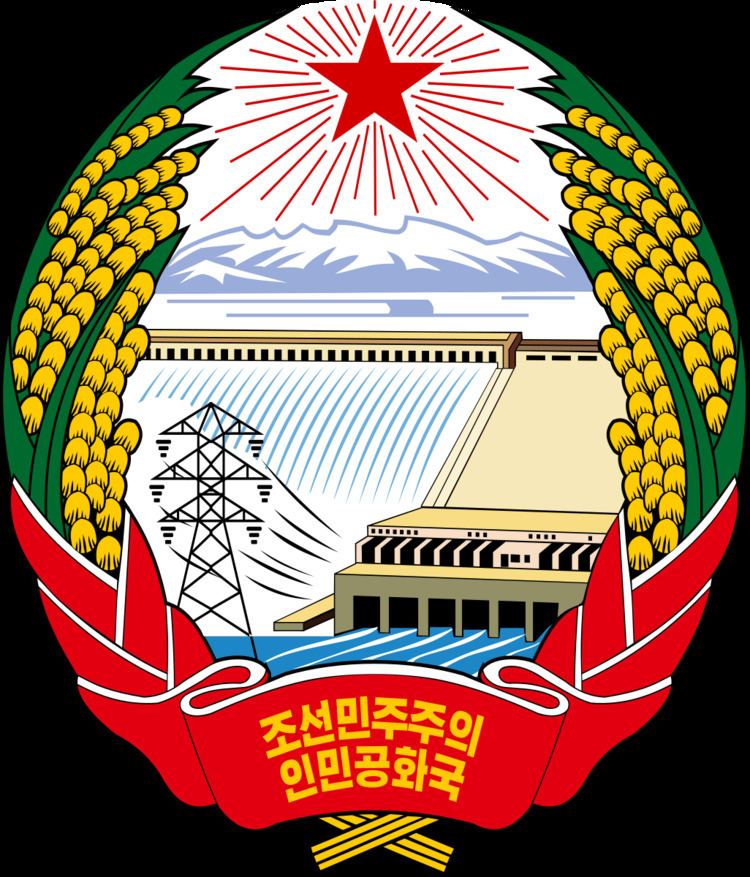 | ||
Elections in North Korea are held every five years for the Supreme People's Assembly (SPA) — the country's national legislature — and every four years for Local People's Assemblies.
Contents
All seats are won by the Democratic Front for the Reunification of the Fatherland. The Workers' Party of Korea dominates the Front and holds 87.5% of the seats, with 7.4% for the Korean Social Democratic Party, 3.2% for the Chondoist Chongu Party, and 1.9% for independent deputies. According to official reports, turnout is near 100%, and approval of the Democratic Front's candidates is unanimous or nearly so.
Procedure
In reply to a question put forth by Michael Marshall, Li Chun Sik of North Korea stated at a meeting of the Association of Secretaries General of Parliaments (ASGP) of the Inter-Parliamentary Union:
While candidates could be nominated by anyone, it was the practice for all candidates to be nominated by the parties. These nominations were examined by the United Reunification Front and then by the Central Electoral Committee, which allocated candidates to seats. The candidate in each seat was then considered by the electors in meetings at the workplace or similar, and on election day the electors could then indicate approval or disapproval of the candidate on the ballot paper.
Only one candidate appears on the ballot. Elections are ostensibly conducted by secret ballot, and a voter may cross off the candidate's name to vote against him/her, but must do so by crossing out the name in a special booth. Voting is mandatory and turnout is habitually near 100%.
Members of the Supreme People's Assembly are elected to five-year terms, and meet for SPA sessions up to ten days per year.[1] The Supreme People's Assembly elects a standing committee known as the Presidium, which exercises legislative functions when the Assembly is not in session. It also elects the Chairman of the National Defence Commission, the country's chief executive, and the Premier.
Local elections
Local elections have been held since 1999. The people elect representatives to city, county, and provincial people's assemblies in local elections every four years. The number of representatives is determined by the population of each jurisdiction.
Mayors and governors are elected. Their role is to work with the unelected and more influential city and province party secretaries.
Criticism
The elections have been variously described as show elections or a political census. Seats are uncompetitive as all candidates are chosen and won by the Democratic Front for the Reunification of the Fatherland. Because of the near-100% turnout, elections double as unofficial censuses. The inminban neighborhood watch reportedly watches the elections to identify and investigate no-shows.
A voter may cross off the candidate's name to vote against him or her, but must do so with a red pen next to the ballot box in sight of electoral officials, or there may be a separate ballot box for 'no' votes. Many North Korean defectors claim such an act of defiance is too risky to attempt.
Latest election
The latest election was the first conducted under the leadership of Kim Jong-un following the death of Kim Jong-il in December 2011.
Summary of the 9 March 2014 North Korea Supreme People's Assembly election results
Past elections
The last election conducted under the leadership of Kim Jong-il was held on March 8, 2009. The following day, North Korean media announced that he was unanimously re-elected to parliament, though none of his sons were among the appointments. The election committee also stated that 99.98% of all registered voters took part in voting, with 100% voting for their candidate in each district. All seats were won by the Democratic Front for the Reunification of the Fatherland, under the control of the Worker's Party.
